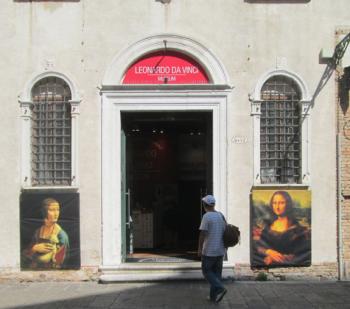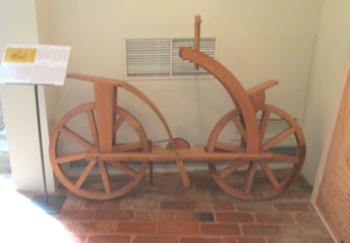Da Vinci Museum in Venice
This item appears on page 12 of the February 2017 issue.
When my wife, Fyllis, and I spent a week in Venice with Untours, Sept. 7-14, 2016, we followed the busy tourist trail to the usual places. We jostled with crowds and pigeons in Piazza San Marco, rode water buses past the stately mansions that lined the Grand Canal and oohed and aahed at numerous architecturally magnificent churches and the equally magnificent art they contain.
Since we were traveling (for $2,998 for both of us, land only) with the aptly named Untours (Media, PA; 888/868-6871, untours.com), which I call the “nontour tour company,” we followed its motto of “Living like the locals.” That meant we were free to explore Venice on our own, at our own pace, where and when we wished, armed with a flood of information and getting, if desired, on-site assistance.
A delightful benefit of that approach, which turned out to be a highlight of our trip, was coming upon an often-overlooked but fascinating museum.
The Leonardo da Vinci Museum (Campo San Rocco 3052, 30125 San Polo, Venezia, Italia; phone + 39 041 8876815, www.davincimuseum.it) is hidden in plain sight, tucked on a small square shared by two churches that attract most of the attention.
During Leonardo’s lifetime (1452-1519), just one of his many accomplishments — painting the “Mona Lisa” or “The Last Supper” or creating the concepts of the helicopter, parachute and tank, for example — would have earned him a place in history, but his areas of interest also included architecture, science, mathematics, music, botany, geology, astronomy, literature, sculpting and cartography.
Da Vinci’s investigations into anatomy led to detailed drawings accompanied by written descriptions expressing lucid insights into the functioning of the human body that were centuries ahead of their time.
We began our visit by watching videos that provided an overview of Leonardo’s life. In the exhibition rooms, reproductions of his best-known paintings, presented in extremely high resolution, with backlight technology, are hard to distinguish from the real thing.
Areas are devoted to Leonardo’s imaginative contributions in construction machinery, the production of textiles and mechanical clocks. Next come exhibits dealing with tools, architecture, flight, optics and, to our surprise, war machines, including an armored tank propelled by two men cranking a shaft.
The displays are augmented by descriptive information in several languages, including English, plus handwritten notes and sketches by da Vinci. A welcome surprise — visitors may handle and operate models to learn how the originals worked.
Located on San Rocco Square, the Leonardo da Vinci Museum is housed in two adjacent buildings, one a medieval castle. The admission price was €8 (about $8.50) for adults and $5.50 for seniors over 65 and children over 6.
In Fyllis’ and my opinion, it would be a very worthwhile visit even at a higher price.
VICTOR BLOCK
Washington, DC


